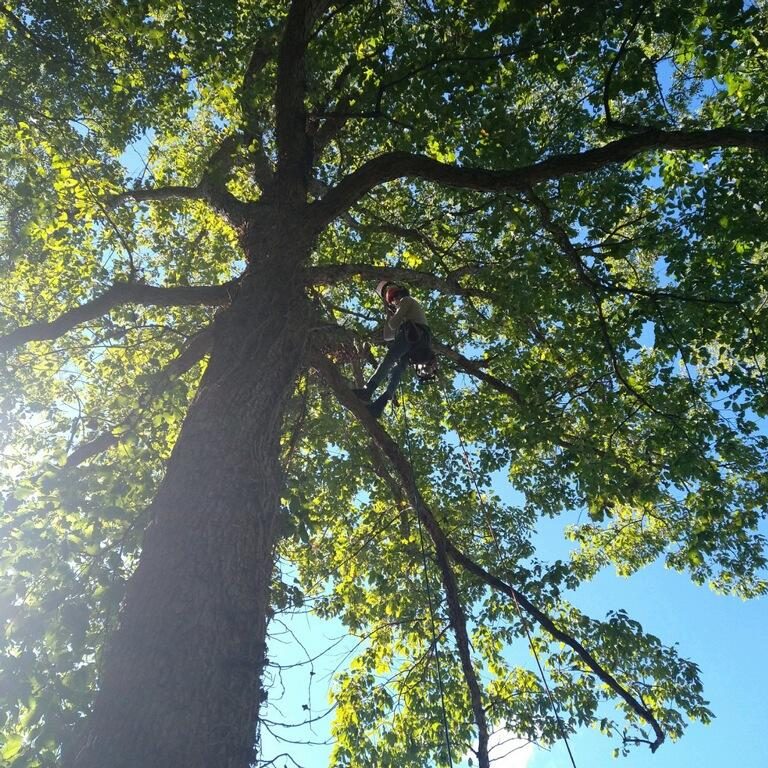Why Is Tree Trimming So Important?
Tree trimming is a critical process that involves removing overgrown, dead, or diseased branches from trees. This helps them maintain their health and structural integrity.
Regular tree trimming can also enhance the aesthetic appeal of a landscape and prevent potential safety hazards, such as falling branches.
More Reasons To Trim That Tree
There are several reasons why tree trimming is important. First, it can improve the overall health of a tree by removing dead or diseased branches. These branches can spread infections or weaken the tree’s structure. Trimming can also help control the size and shape of a tree. This prevents it from growing too large and potentially causing damage to nearby structures.

The Health Benefits of Tree Trimming
Additionally, tree trimming can improve the appearance of a landscape, making it more attractive and inviting. Regular trimming can help maintain the natural shape of trees and promote healthy growth patterns. It can also increase sunlight and airflow to the tree’s canopy, promoting the growth of new leaves and branches.
Tree Trimming Methods And Techniques
Tree trimming involves various methods and techniques that vary depending on factors such as tree species, growth habits, and environmental conditions. Professional arborists have the knowledge and experience to determine the best approach for each tree, ensuring that it is trimmed in a way that promotes health and longevity.
Crown Reduction
One common method of tree trimming is crown reduction. This technique involves selectively removing branches from the tree’s canopy to reduce its overall size and shape. Crown reduction is often used on trees that have outgrown their space or are growing too close to buildings or power lines.
Crown Thinning
Another technique is crown thinning, which involves selectively removing branches to increase the amount of sunlight and airflow to the tree’s canopy. This can promote healthy growth and reduce the risk of disease or insect infestation. Crown thinning is often used on trees that are overgrown or have dense canopies.
Tree Topping
Tree topping is a controversial technique that involves removing the top portion of a tree’s canopy. While this method can be effective at reducing the size of a tree, it can also cause serious damage and is generally not recommended. Topping can weaken the tree’s structure and promote the growth of weak, spindly branches that are prone to breaking.
When it comes to tree trimming, it’s important to hire a tree service professional who has the knowledge, experience, and equipment needed to safely and effectively trim trees. Arborists are trained to identify potential hazards and make informed decisions about which branches to remove and how to trim the tree in a way that promotes health and safety.
Finding the right Tree Professional is a Process
Before hiring anyone, it’s important to do your research and ensure that they are licensed(if required), insured, and have a good reputation in the community. You should also ask for references and check online reviews to ensure that you’re hiring a reputable professional.
Once you’ve hired an arborist, they will begin by assessing the tree and determining the best approach for trimming. They will then use specialized equipment, such as chainsaws and pruning shears, to carefully remove branches and shape the tree. In some cases, they may use ropes and pulleys to lower large branches safely to the ground.
After the trimming is complete, the ground crew will clean up the site, removing all debris and leaving your property looking clean and tidy. They may also provide advice on how to care for your trees going forward, such as how often to trim them and how to spot signs of disease or insect infestation.